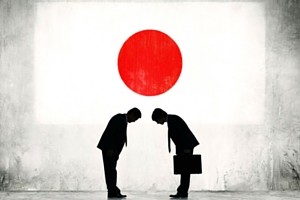 I have long been fascinated with the ritual of bowing in Japan. Clerks in a hotel bow when you enter the lobby. They bow when you finish checking in. Conductors bow when entering a train car. They bow again when exiting. Groups of friends, particularly if they are older, with bow deeply when parting.
I have long been fascinated with the ritual of bowing in Japan. Clerks in a hotel bow when you enter the lobby. They bow when you finish checking in. Conductors bow when entering a train car. They bow again when exiting. Groups of friends, particularly if they are older, with bow deeply when parting.
I can’t pretend to grasp the ins and outs of the etiquette of bowing. But bowing seems to serve as a boundary marker, delineating the beginning and ending of many social interactions. It is a sign of acknowledgement and a sign of respect.
Because I feel inept and somewhat embarrassed about trying to bow, I made a point on this trip to analyze the bow. It wasn’t easy. Bows seem to occur unexpectedly and they are often rapidly performed. Sometimes I caught myself imitating what I saw (when I had no reason for bowing). In any case, here is my rough analysis.
Arms at the side, cast the eyes down, hinge at the hips and tilt forward, softening slightly through the chest and tipping the head. All these actions should be performed almost simultaneously, returning immediately to an erect posture.
On this trip I also noticed what I call the “modified bow.” This is basically a head nod with a little bit of chest involvement. It is used to acknowledge someone (say, on entering a shop) or to express thanks at the end of a transaction or interaction.
The modified bow has many uses. For example, our daughter became exasperated when my husband raised his hand to thank a waiting driver as we used the pedestrian crossing. “They won’t know what that means,” she scolded. “You should have nodded.”
